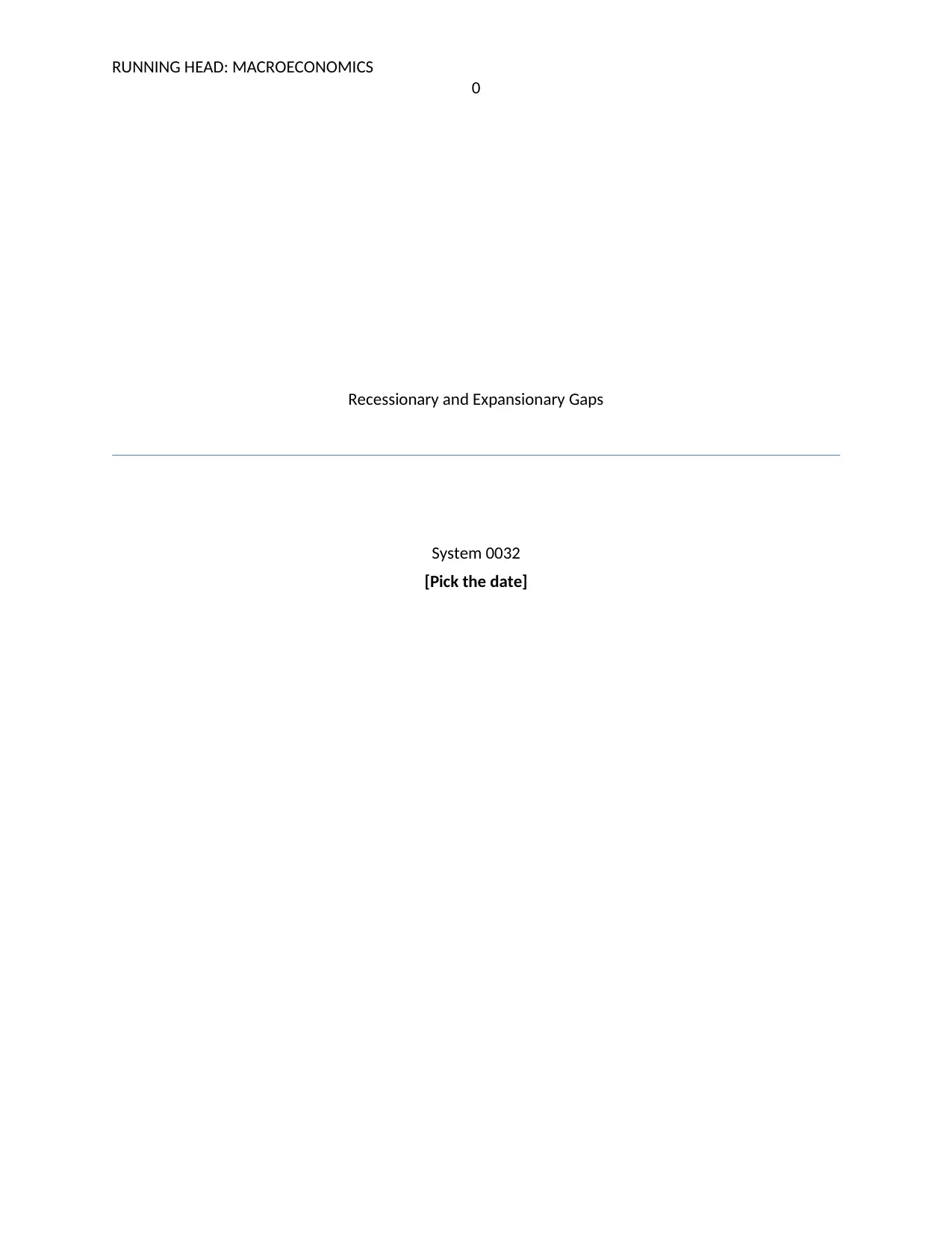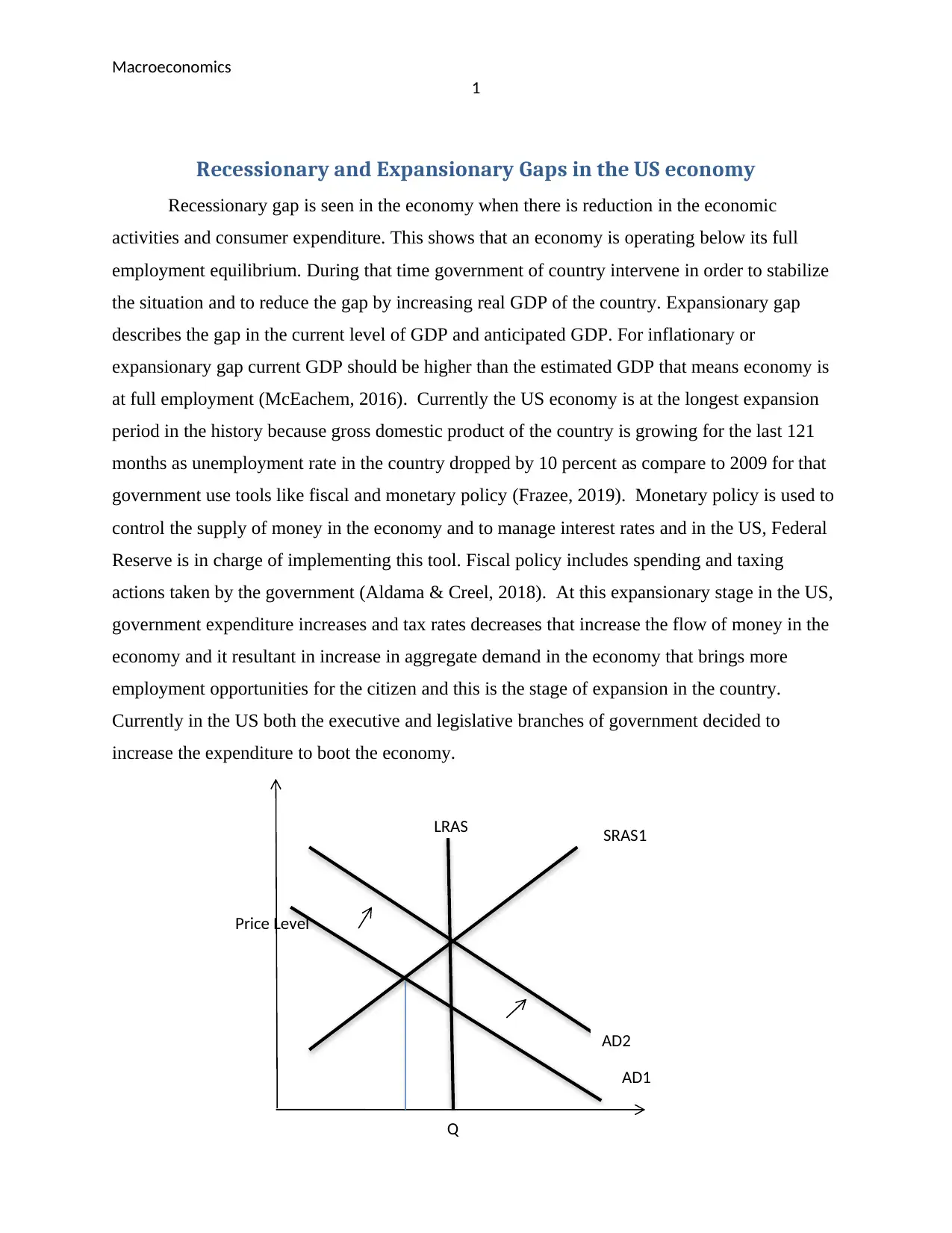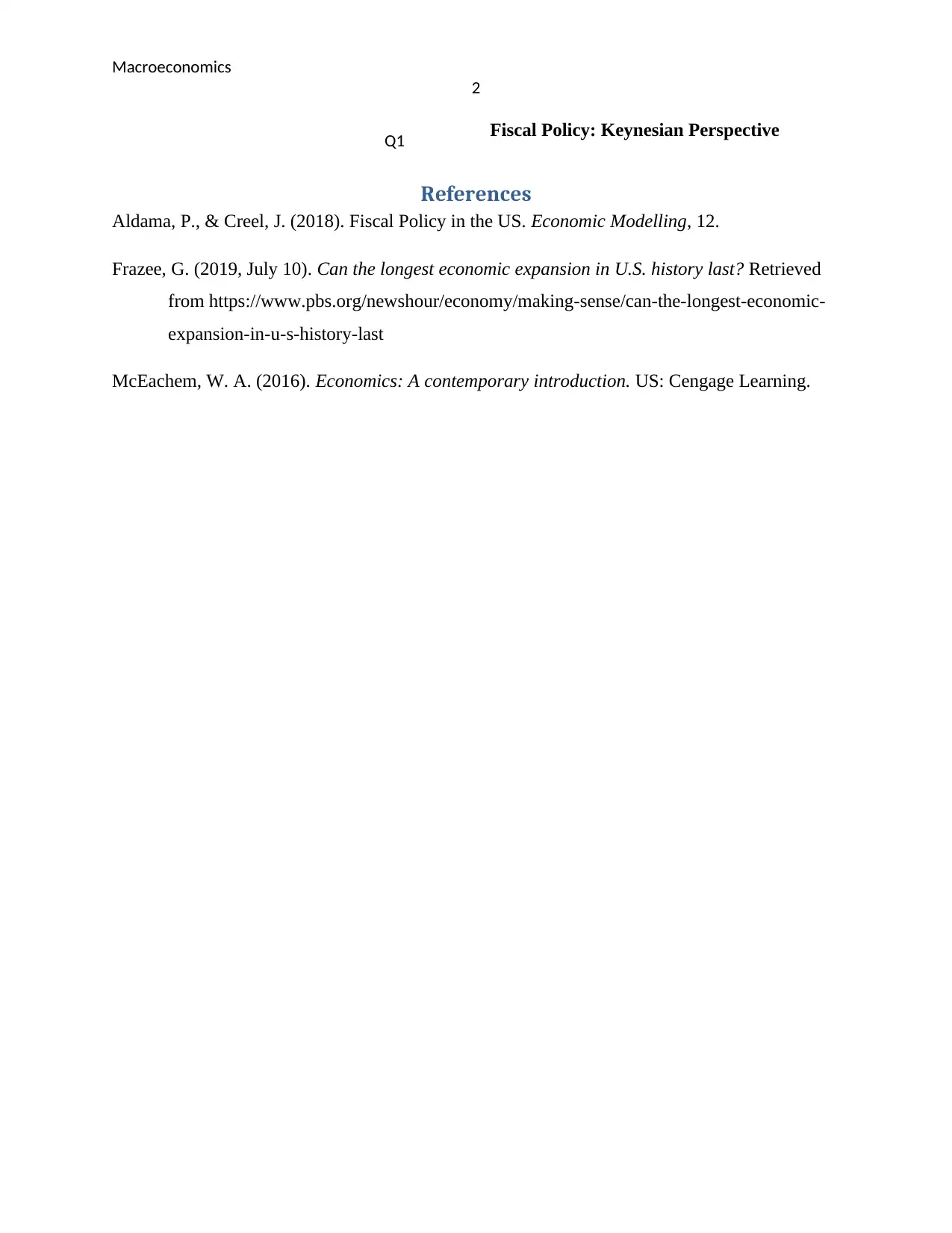Analysis of Recessionary and Expansionary Gaps in Macroeconomics
VerifiedAdded on 2022/11/19
|3
|402
|85
Homework Assignment
AI Summary
This assignment examines the concepts of recessionary and expansionary gaps in macroeconomics, focusing on the US economy. It defines recessionary gaps as periods of reduced economic activity and the government's role in stabilizing the economy. Conversely, it explains expansionary gaps where the current GDP exceeds the anticipated GDP, often indicating full employment. The assignment highlights the current expansionary phase in the US, driven by increased government spending and tax cuts, which boost aggregate demand and employment. It also mentions the use of both fiscal and monetary policies, with the Federal Reserve managing money supply and interest rates and the government controlling spending and taxation. The assignment concludes with a Keynesian perspective on fiscal policy and includes references to relevant economic literature.
1 out of 3









![[object Object]](/_next/static/media/star-bottom.7253800d.svg)